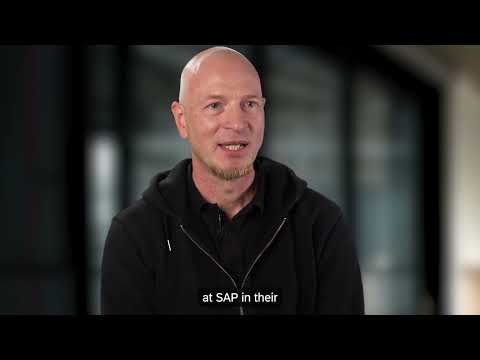Axfood, Sweden’s second largest food retailer, worked with SAP to develop a new solution for assortment planning, now available as a standard SAP product.
As a longtime SAP customer, Axfood values innovation as an important component of its sustainability strategy and mission to provide affordable, good, and sustainable food. Axfood embraces new trends, customer behaviors, and technologies as a way to secure its position as a challenger and future-facing company. When it came to its assortment planning needs, Axfood welcomed the opportunity to innovate on an existing SAP solution to create something much more differentiated and customer-centric. At the top of its agenda was creating a solution that makes users “love to work in the system.”

Improving Assortment Planning for More Sustainable Business
Assortment planning refers to the process of selecting which products a supermarket will carry and sell. But it’s not just about having the right products on the shelves. With expiration dates dictating a product’s shelf life, intelligent assortment planning plays a critical role in sustainability strategies for retailers by limiting unnecessary wastage and providing targeted product attributes, such as organic, fair-trade, or carbon neutral, in a trackable way.
To be able to make good assortment decisions, companies need large amounts of data from sales histories, forecasts, customer data, and competitor analyses. Because of the large amounts of data coming together on one screen, it’s important that the solution also feels intuitive to use. For Dick Due Pedersen, department manager for Price and Assortment at Axfood IT, this means not needing to think so much about how to use the system and instead being able to concentrate on the data being shown to easily make the right decisions.
From Pain Points to Working Prototype in Four Days
The work kicked off in November 2019 when Axfood participated in an SAP Fiori Makers program, looking to improve the user experience of some of its applications. These programs are four-day, intensive, hands-on workshops where SAP design experts come together with business representatives and end users to jump-start the user experience (UX) process transformation for companies around the world. For this occasion, a team of 20 professionals, including IT experts and end users from Axfood, came together with SAP’s leading designers and developers.
During the program, Axfood was carefully led through the design and development process, including identifying the use cases that needed special attention and the pain points to be solved. Working closely for four days, the team managed to create the first working prototypes for a few assortment planning scenarios in a real SAP environment. After seeing what could be achieved with SAP’s design system, Axfood was excited to continue iterating with the SAP Assortment Planning team beyond the framework of the program. As Pedersen explains, continuing to work on improving the solution was a win-win situation.
Designing a New, World-Class Solution Powered by User Insights
In the decision to modernize the existing product for SAP Assortment Planning, one of the key concerns that Axfood wanted to target was the user experience. “We want the users to enjoy working in the system so that they actually use it and don’t venture off and use any other tools because then we wouldn’t have the benefit of built-in functions, up-to-date KPIs, and intelligent planning,” explains Anna Ihme, application specialist for Assortment Planning at Axfood.
To retain users, it was important to address the lingering pain points of the previous solution. This included slow performance, not being able to plan multiple assortments simultaneously, not having enough customer-centric aspects in the decision-making processes, and needing to use a separate system such as Microsoft Excel to conduct cluster analysis.
The main design challenge was to provide the user with the data that they needed easily at their fingertips without overwhelming them. To do this, designers at SAP relied heavily on user research and insights to inform their designs. As User Experience Design Specialist Daphne Schimetschek recounts, it was necessary to get to know the end user’s goals, needs, and pain points in detail – a challenging task when it came to something as complex as assortment planning. Planners typically need a lot of information on one screen, and it was difficult at first to discern which information users needed and when. With the different players spread across the globe – Axfood in Sweden, the developers in the United States, India, and Romania, the product owners in Switzerland, and the designers in Germany – it was critical to maintain close alignment and weekly check-ins with the team.
When it came to designing the solution, it was a balance between creativity, innovation, and practicality. “Every project must have a vision,” explains Schimetschek. “But to achieve it, we need small steps. This is where SAP’s design system helps. For standardized processes, we can use our existing design language and we don’t have to rethink everything. This gives us time to focus on forward-thinking ideas and develop new concepts, which in turn inform our design system going forward.”
“SAP really stretched the system for our vision,” says Pedersen. The new solution allows users to display all the data they need on the same screen while maintaining the advantages of Excel, but also adding the artificial intelligence (AI) and mass maintenance that is only possible with SAP’s design system. It allows for real-time simulations, uses predictive analytics to cluster based on attributes, KPIs, or any custom criteria, as well as enables manual adjustments or overrides where necessary.
As Dr. Guido Menkhaus, chief product owner for Retail Product Management at SAP, explains, the big advantage of SAP is the flexibility offered to users: “As a user, you can decide how you would like to work with the system, whether you want a very manual way of working by selecting a product for a particular store or fully automatically when you’re planning an assortment together with a lot of data and artificial intelligence.”
A Better Future with Customer Innovation
Innovating with customers and end users brings our applications to life. At the heart of successful collaboration is a solid user research foundation, which allows SAP to bring human-centric applications into the market that have a strong fit to customer requirements.
Experience matters. Follow our journey as we transform the way we build products for enterprise on www.sap.com/design.
Andrea Waisgluss works in SAP Design.



